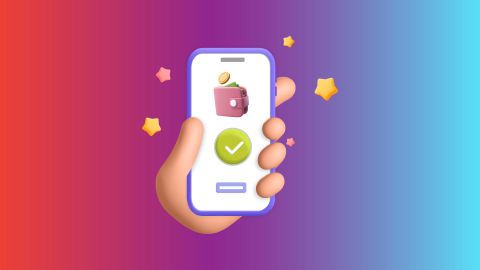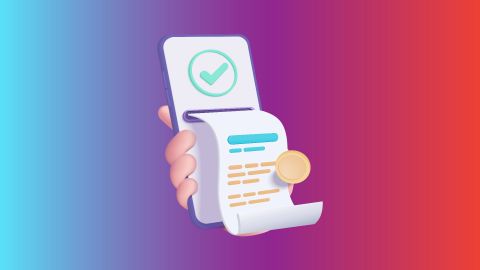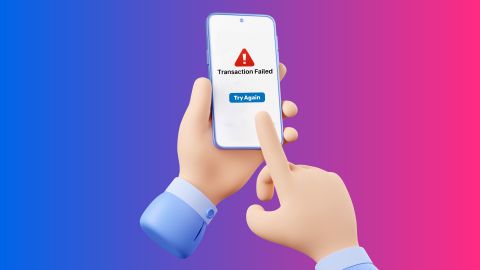Uncover the pivotal moments in the internet's evolution, from its early days in the 1960s to the rapid expansion in the 1990s. Learn how technological innovations changed the way we connect.
History of the internet
-
-
The history of the Internet is a fascinating journey that spans several decades, transforming the way people communicate, share information, and conduct business. It began as a military project and evolved into a global network that connects billions of users. The Internet has revolutionised industries, changed social interactions, and created new economic opportunities. Today, it serves as an essential tool for everyday activities, from browsing websites to making payments.
Companies like Bajaj Finserv have adapted to this digital landscape by offering services such as Bajaj Pay for seamless transactions and broadband bill payments, showcasing how businesses leverage the Internet to enhance customer experiences. Understanding the Internet's history provides valuable insights into its current role and future potential. For those managing their broadband connections, platforms like Bajaj Pay facilitate easy online transactions for services such as broadband bill payments.Introduction to the history of the Internet
The Internet's history is a tale of innovation and collaboration that began in the 1960s. Initially conceived as a means for military communication, it quickly expanded to include academic institutions and research organisations. The development of key technologies laid the groundwork for what would become a vital part of modern life. As businesses recognised the potential of the Internet, they began to harness its power for marketing, sales, and customer engagement.The early beginnings: 1960s to 1970s
The early beginnings of the Internet can be traced back to the 1960s when researchers sought ways to connect computers for efficient communication. The U.S. Department of Defence initiated ARPANET (Advanced Research Projects Agency Network) in 1969, which became the first operational packet-switching network. This groundbreaking project allowed multiple computers to communicate over long distances, laying the foundation for future networks.
During this period, universities and research institutions began connecting their computers, sharing resources and information in unprecedented ways. The concept of networking was still in its infancy, but these early experiments set the stage for significant advancements in computer technology and communication protocols.The role of ARPANET in internet evolution
ARPANET played a crucial role in the evolution of the Internet by demonstrating the feasibility of packet-switching technology. This method broke down data into smaller packets that could be sent independently across various routes before being reassembled at their destination. This approach proved more efficient than traditional circuit-switched networks, which required a dedicated connection for each communication session.
As ARPANET expanded throughout the 1970s, it attracted attention from academic institutions and private companies alike. Researchers developed protocols to facilitate communication between different types of networks, leading to standardisation efforts that would define future Internet architecture. Notably, Vint Cerf and Bob Kahn introduced Transmission Control Protocol (TCP) and Internet Protocol (IP), which became foundational elements of modern networking. ARPANET's success inspired further research and investment in networking technologies, ultimately paving the way for the global Internet we know today.Key milestones in the 1980s
The 1980s marked significant milestones in the development of the Internet. In 1983, ARPANET transitioned from NCP (Network Control Protocol) to TCP/IP (Transmission Control Protocol/Internet Protocol), establishing a standardised communication framework that allowed diverse networks to interconnect seamlessly.
This transition was pivotal as it enabled different types of networks to communicate with one another effectively. Additionally, 1985 saw the establishment of the first domain name system (DNS), allowing users to access websites using easy-to-remember names instead of numerical IP addresses. By the end of the decade, commercial restrictions on network usage were lifted, leading to an explosion in private sector interest and investment in Internet technologies.The birth of the modern internet: TCP/IP (1983)
The introduction of TCP/IP in 1983 is often regarded as the birth of the modern Internet. This protocol suite provided a universal standard for data transmission across networks, enabling different systems to communicate regardless of their underlying technology. TCP ensures reliable transmission by managing data packets' sequencing and error correction, while IP handles addressing and routing them across networks.
This dual-layer approach allowed for greater flexibility and scalability, making it possible for countless devices to connect seamlessly. As more organisations adopted TCP/IP, it facilitated an unprecedented expansion of networked computers globally. By providing a common language for diverse systems, TCP/IP laid down the essential framework that would support future innovations on the Internet.The expansion of internet networks post-1983
Following the adoption of TCP/IP in 1983, Internet networks expanded rapidly throughout the late 1980s and early 1990s. Universities and research institutions continued connecting their networks under this new standard, leading to a substantial increase in online resources available for academic research and collaboration. The National Science Foundation (NSF) played a pivotal role by creating NSFNET, which connected several regional networks across America and provided access to supercomputers for researchers nationwide.
This initiative significantly increased bandwidth availability and improved connectivity speeds, making it easier for users to share information and collaborate on projects. As more commercial entities began to recognise the potential of this growing network infrastructure, they started establishing their own connections, further accelerating growth.Technological innovations: Computers and networks
Packet switching: Revolutionised data transmission by breaking information into smaller packets.
Domain Name System (DNS): Simplified web navigation by allowing users to use easy-to-remember names instead of IP addresses.
World Wide Web: Introduced by Tim Berners-Lee in 1991; made accessing information on the Internet user-friendly.
Web browsers: Enabled users to navigate websites easily; Netscape Navigator was one of the first popular browsers.
Email: Became a primary means of communication online; transformed personal and professional interactions.Key events that shaped the internet's growth
Launch of commercial ISPs: In 1991, commercial internet service providers (ISPs) emerged, allowing individuals access.
Introduction of search engines: Search engines like Yahoo! (1994) made finding information easier on an expanding web.
E-commerce boom: The mid-1990s saw businesses start selling products online; Amazon launched in 1994.
Dot-com bubble: Late 1990s witnessed rapid growth in tech startups; led to significant investment but also market crashes.
Social media emergence: Platforms like Facebook (2004) transformed social interactions online.The internet in the 1990s and beyond
The 1990s marked a turning point for the Internet as it transitioned from an academic tool into a commercial powerhouse. The launch of web browsers like Netscape Navigator made accessing information more user-friendly than ever before. E-commerce emerged as a significant force during this decade with companies like Amazon paving new paths for online shopping experiences.
By mid-decade, social media platforms began appearing, changing how people interacted online forever. The dot-com bubble brought both excitement and caution as many tech startups flourished while others failed dramatically due to unsustainable business models. Despite these challenges, advancements continued into the new millennium with faster broadband connections becoming widely available.Steps to pay your broadband bill online on the Bajaj Finserv website
Paying the broadband bill through the Bajaj Finserv website is simple. Here are the steps:1. Visit the Bajaj Finserv website
2. Navigate to ‘ALL PAYMENTS’ under the ‘PAYMENTS’ section and click on it
3. Select the ‘BROADBAND POSTPAID’ option from under ‘BILLS & RECHARGES’
4. A pop-up will request for sign-in, enter your mobile number and click on ‘GET OTP’ to login
5. Select your service provider from the list of broadband service providers
6. Enter your ‘CUSTOMER ID’ and click on ‘FETCH YOUR BILL’
7. Verify the bill amount and click on ‘PAY NOW’
8. Pay using the multiple payment methods available such as Bajaj Pay UPI, debit card, credit card, net banking, and Bajaj Pay Wallet.
Post the transaction you will be receiving a confirmation to intimate about successful payment.Fee and charges
A convenience fee of up to 2% will be charged depending on the transaction amount and payment mode (inclusive of applicable taxes). For more information on fees and charges, click here.
Note: For failed transactions, the total amount including charges except taxes are reversed.
-
Recharge and Pay Bills
Mobile Prepaid
Mobile Postpaid
Broadband Bill Payment
Electricity Bill Payment
Bajaj Finserv App for All Your Financial Needs and Goals
Trusted by 50 million+ customers in India, Bajaj Finserv App is a one-stop solution for all your financial needs and goals.
You can use the Bajaj Finserv App to:
Apply for loans online, such as Instant Personal Loan, Home Loan, Business Loan, Gold Loan, and more.
Explore and apply for co-branded credit cards online.
Invest in fixed deposits and mutual funds on the app.
Choose from multiple insurance for your health, motor and even pocket insurance, from various insurance providers.
Pay and manage your bills and recharges using the BBPS platform. Use Bajaj Pay and Bajaj Wallet for quick and simple money transfers and transactions.
Apply for Insta EMI Card and get a pre-approved limit on the app. Explore over 1 million products on the app that can be purchased from a partner store on Easy EMIs.
Shop from over 100+ brand partners that offer a diverse range of products and services.
Use specialised tools like EMI calculators, SIP Calculators
Check your credit score, download loan statements and even get quick customer support—all on the app.
Download the Bajaj Finserv App today and experience the convenience of managing your finances on one app.
You can use the Bajaj Finserv App to:
Apply for loans online, such as Instant Personal Loan, Home Loan, Business Loan, Gold Loan, and more.
Explore and apply for co-branded credit cards online.
Invest in fixed deposits and mutual funds on the app.
Choose from multiple insurance for your health, motor and even pocket insurance, from various insurance providers.
Pay and manage your bills and recharges using the BBPS platform. Use Bajaj Pay and Bajaj Wallet for quick and simple money transfers and transactions.
Apply for Insta EMI Card and get a pre-approved limit on the app. Explore over 1 million products on the app that can be purchased from a partner store on Easy EMIs.
Shop from over 100+ brand partners that offer a diverse range of products and services.
Use specialised tools like EMI calculators, SIP Calculators
Check your credit score, download loan statements and even get quick customer support—all on the app.
Download the Bajaj Finserv App today and experience the convenience of managing your finances on one app.
Frequently asked questions
What is the main difference between Wi-Fi and Bluetooth?
Wi-Fi is designed for high-speed internet access over longer distances while Bluetooth connects devices over shorter ranges with lower data transfer rates.
Which is faster, Bluetooth or Wi-Fi?
Wi-Fi is generally faster than Bluetooth due to its ability to handle larger amounts of data over greater distances.
Can Bluetooth be used for internet access?
Bluetooth can provide limited internet access through tethering but is not ideal compared to Wi-Fi due to lower speeds.
How has mobile technology influenced internet usage?
Mobile technology has greatly increased internet accessibility; smartphones allow users to connect anytime from virtually anywhere.
What role do cybersecurity measures play in protecting internet users?
Cybersecurity measures protect users from data breaches and cyber threats; they are essential for maintaining privacy online.
Show More
Show Less




